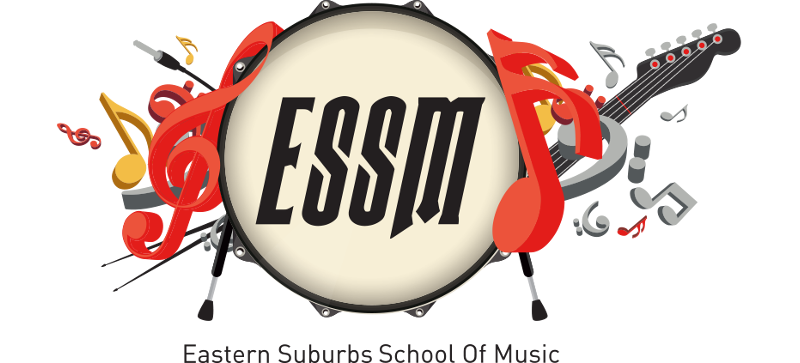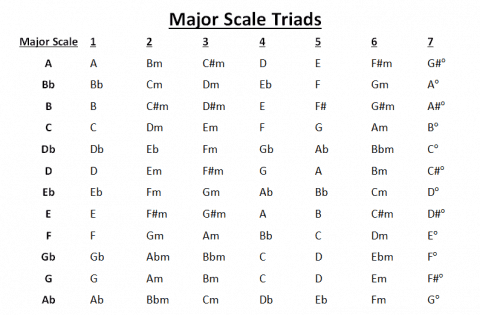Major Scale Chords
Knowing the major scale chords will help you learn songs faster, figure out lead parts and write music. Each scale in music produces a set of chords. As covered in our article on triad chords and sevenths chords, we leap a note in the scale to create a chord.
This article will help you understand how chords are formed using the notes in the major scale. Look at the end of the article for a cool tip about how to apply this knowledge to the minor scale as well.
If you would like further help in understanding music theory contact us via the form on the right of the page or calling 0421 705 150 to book lessons with the Eastern Suburbs School of Music.
Major Scale Chords – Triads
Lets create the chords of the A major scale. These chords have been formed by leaping a note through the scale. We need to collect three notes to make the chord. When starting on the note A and leaping over a note each time we have the notes A, C# and E. When played together these notes sound an A major chord. When starting on B and leaping we get B, D and F#. This creates a B minor chord. After doing this for each note in the scale we have this set of chords:
A Bm C#m D E F#m G#dim
As previously discussed in our major scale article, each major scale has the same notes formula. Just as there is a note formula to learn (tone, tone, semitone, tone, tone, tone, semitone) there will be a chord formula to learn.
The formula for the chords of the major scale is:
- Major
- Minor
- Minor
- Major
- Major
- Minor
- Diminished
This means every chord starting on the second note of the major scale is always minor. Every chord on the fifth note is always major. As long as you know the note sequence you can quickly apply this formula to get the major scale chords. Use this table to find the major scale chords of all 12 keys.
Learning Songs using Major Scale Chords
It is of great benefit knowing the major scale chords sequence. If a song is in G major you know that there is now only a small selection of chords to choose from. Most commonly the chords built on notes 1, 4, 5 and 6 are used in creating pop and rock songs.
In G major these chords are G major, C major, D major and E minor. There is a million songs using this exact set of chords. The popular song Brown Eyed Girl by Van Morrison is one example, heard below.
Major Scale chords – Sevenths
We can take the leaping idea to create major scale chords one step further. This will create 4 note chords that we label sevenths chords. The formula for sevenths chords in the major scale is:
- Major 7
- Minor 7
- Minor 7
- Major 7
- Dominant 7
- Minor 7
- Half Diminished
These chords are further explained in our article on sevenths chords. These chords will add more colour to your playing. Make sure on the 5th chord of the scale you play a dominant 7. While all minor triad chords turn into minor 7, our major triads turn into major or dominant 7. Be aware of what chord is the 5th from your chosen major scale.
Final Trick of Major Scale Chords
Remember as discussed on our article on the minor scale that the natural minor has the same notes as the major scale. The same note contents will produce the same chords! Therefore you have also learned how to find the chords to any songs that are in natural minor keys as well.
We hope this article has been useful in learning major scale chords and how to make use of this shortcut to learning songs.
Eastern Suburbs School of Music is supported by two fine music instrument stores near our Boronia and Carrum Downs locations. When in Boronia, visit Keyboard Corner/KC’s Rock Shop for all your instrument and accessories needs. When in Carrum Downs, visit Guitars and Things to find your music instrument needs.






 0421 705 150
0421 705 150
